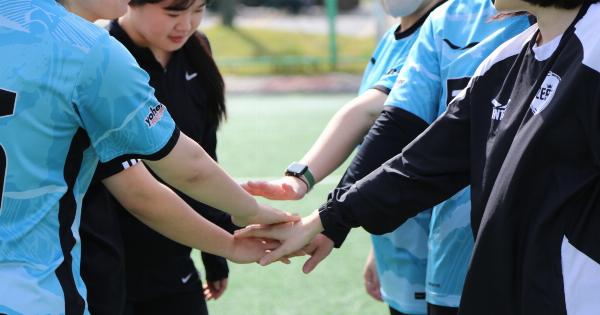Sports play an important role in the lives of children and adolescents.
Whether it’s soccer, basketball, swimming, or any other physical activity, sports provide numerous benefits such as improved physical fitness, social interaction, and character development. However, participating in sports also comes with its fair share of risks and potential injuries. That’s why it’s crucial to ensure your child’s safety by getting a sports exam.
What is a Sports Exam?
A sports exam is a comprehensive medical assessment conducted by healthcare professionals, typically before a child or adolescent begins participating in sports activities.
This exam evaluates their overall health, physical fitness, and any potential medical conditions that may hinder their participation or put them at risk of injury.
Why is a Sports Exam Important?
A sports exam serves as a preventive measure to minimize the risk of injuries and ensure the safety of young athletes. The exam helps identify any underlying medical conditions that may pose a threat during physical activity.
By detecting these conditions early on, appropriate measures can be taken to manage them effectively and prevent complications.
Moreover, the sports exam assesses a child’s physical fitness level and helps guide them towards a safe and appropriate exercise program.
It may also uncover any potential musculoskeletal issues that need attention, such as weak muscles, misalignments, or imbalances, which can increase the risk of injury if left unaddressed.
What Does a Sports Exam Include?
A typical sports exam consists of various components designed to evaluate different aspects of a child’s health and fitness:.
1. Medical History Review
Healthcare professionals will review the child’s medical history, including any previous injuries, surgeries, allergies, medications, and existing medical conditions.
This information helps identify potential risk factors and allows healthcare providers to determine the best course of action.
2. Physical Examination
A thorough physical examination is conducted to evaluate the child’s overall health. This includes checking their height, weight, blood pressure, heart rate, respiratory rate, and vision.
This examination helps detect any abnormalities or signs of underlying health issues.
3. Cardiovascular Assessment
During a sports exam, the healthcare provider may conduct a cardiovascular assessment to evaluate the function of the heart and detect any abnormalities or conditions that may put the child at risk during physical activity.
4. Musculoskeletal Evaluation
Assessing the musculoskeletal system is a critical component of a sports exam.
This evaluation helps identify any potential weaknesses, imbalances, or structural issues in the bones, joints, muscles, and ligaments that could increase the risk of injuries.
5. Flexibility and Strength Testing
Flexibility and strength are essential for optimal athletic performance and injury prevention.
The sports exam may include specific tests to assess a child’s flexibility and strength levels, providing insights into potential areas that require improvement or specific training.
6. Neurological Assessment
A neurological assessment may be conducted to evaluate the child’s cognitive function, reflexes, and overall brain health.
This assessment helps identify any neurological conditions or impairments that may affect their safety during physical activity.
7. Concussion Screening
Concussions are a common injury in sports, particularly contact sports such as football or soccer.
A sports exam often includes a concussion screening test to assess the child’s baseline cognitive function and detect any potential signs of a concussion if they experience a head injury in the future.
8. Nutrition and Hydration Guidance
During the sports exam, healthcare professionals may provide valuable guidance on proper nutrition and hydration for optimal sports performance.
They may discuss the importance of balanced meals, hydration strategies, and the role of supplements, if necessary, to support the child’s overall well-being.
9. Injury Prevention Education
Education plays a pivotal role in preventing sports-related injuries.
The sports exam provides an opportunity for healthcare professionals to educate both the child and their parents on injury prevention strategies, warm-up exercises, proper technique, and the importance of rest and recovery.
10. Clearance for Sports Participation
Based on the findings of the sports exam, the healthcare provider will determine whether the child is fit to participate in sports activities.
In some cases, they may recommend modifications, restrictions, or additional follow-up evaluations to ensure the child’s safety.
Benefits of Discounted Sports Exams
Getting a sports exam is undoubtedly important for any child participating in sports. However, the cost of medical examinations can be a concern for many families. Thankfully, there are ways to make sports exams more accessible and affordable.
Several community organizations, schools, and healthcare providers offer discounted sports exams as part of their commitment to promoting children’s health and ensuring their safe participation in sports.
These discounted exams provide the same level of comprehensive assessment and care but at a reduced cost, making it easier for families to prioritize their child’s well-being.
By taking advantage of discounted sports exams, families can save money while still benefiting from the expertise and advice of healthcare professionals.
This ensures that children receive the necessary medical attention and support they need without straining the family’s finances.
Conclusion
A sports exam is a vital step in protecting your child’s well-being while they engage in physical activities.
It helps identify any underlying health conditions, assess their physical fitness, and educate both the child and their parents on injury prevention strategies.
Don’t let financial concerns hinder your child’s safety. Look for discounted sports exams offered by local organizations, schools, or healthcare providers to ensure your child receives the necessary medical assessment at an affordable cost.
Prioritizing your child’s health and well-being is essential for their overall development, both on and off the field.































